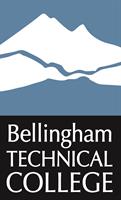BTC Awarded LEEDS Certification
August 30, 2017

Two of Bellingham Technical College’s buildings were awarded LEED Certification for Leadership in Energy and Environmental Design. BTC’s Campus Center was awarded LEED Gold Certification and the Perry Center for Fisheries and Aquaculture Sciences received LEED Silver Certification. Both buildings, designed by HKP Architects, incorporate a number of sustainable features to reduce their impacts on the environment, improve indoor environmental quality and reduce operating costs.
“We are very proud to have achieved this recognition. Our buildings are just one part of the college’s effort to work toward sustainability and provide enhancements to our community,” said Kimberly Perry, BTC President. “The Gold and Silver LEED awards benefit our community, campus, students and staff alike, which is key to our mission.”
The Campus Center building provides a sustainable campus core for students, faculty and community members. The three-story building has both formal and informal learning areas throughout, with the majority of the second floor devoted to classrooms. The first floor is home to Settlemyer Hall (a large auditorium available for campus and public functions), the bookstore, a coffee shop, classrooms, teaching kitchens and a restaurant. The second floor has faculty offices, conference rooms, classrooms and student study areas. The third floor houses an expanded library and a student activities lounge. Outdoor balconies to the north and south offer views of Mount Baker and Bellingham Bay, respectively.
The Campus Center was designed with energy usage and conservation as a main priority. Careful consideration also was given to construction waste, daylighting, green roofs, solar photovoltaic panels, stormwater management, water-efficient fixtures, recycling and local/regional materials. Some examples of the success of the sustainability goals achieved are 97% of construction waste diversion from landfills, energy features reducing operating costs by 31%, and building materials that have 22% recycled content and are 25% local/regionally sourced. Daylighting provides natural light deep in the building with a large center light well and roof monitors. Green roofs and rain gardens help reduce stormwater runoff, and solar photovoltaic panels on the roof provide on-site electricity generation.


